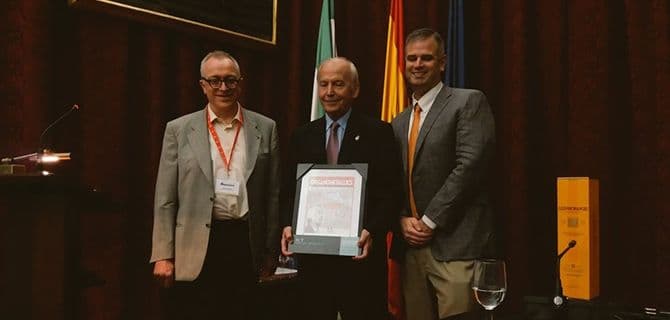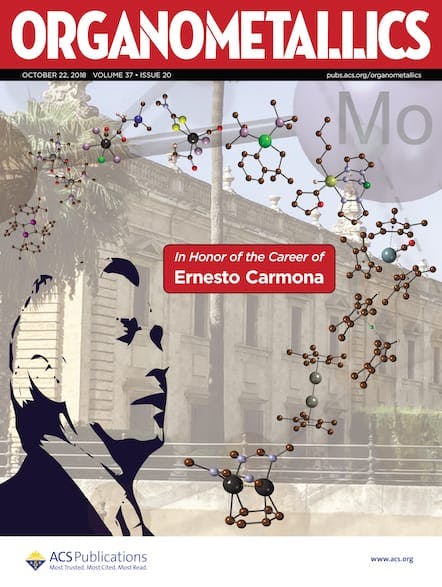Organometallics celebrated the career of organometallic chemistry superstar Professor Ernesto Carmona of the Institute for Chemical Research (IIQ) at the University of Seville with a Special Issue on the occasion of his 70th birthday this year. Professor Carmona is an important figure in Spanish chemistry during the second half of the 20th century. The Organometallics Special Issue […]

An eloquent and informative editorial written by Professor Juan Cámpora, a Research Professor at IIQ who completed his Ph.D. under Professor Carmona’s supervision, describes the life and times of Professor Carmona and introduces Special Issue’s content. As Professor Cámpora relates, Professor Carmona received his Ph.D. at Seville during the formative years of the field of organometallic chemistry in the early 1970s. This period was known for the development of industrially important polymerization catalysts. Professor Carmona spent time as a postdoctoral researcher with Professor Geoffrey Wilkinson’s group at Imperial College London in the mid-1970s, just as Professor Wilkinson received the Nobel Prize in Chemistry 1973 for elucidating the structure and bonding in ferrocene, the molecule that effectively launched the field of organometallic chemistry.
Professor Carmona later went on to make early contributions to C–H activation chemistry, worked on multiple bonded transition-metal complexes, and carried out extensive studies on metallocene complexes. Much of this chemistry is described in more than 50 research papers published by Professor Carmona and his colleagues over the years in Organometallics, which launched in 1982. Professor Carmona has also served as an able administrator, helping to create several important Spanish research centers, including IIQ.
Professor Carmona often led projects to success by showing students the value of systematic and rigorous work carefully performed to the last detail, Cámpora writes. Yet, he never lost sight of the importance of the human qualities of humility and kindness in the pursuit of important objectives and had an uncanny way of galvanizing his coworkers to give their very best. “Everyone who has joined Ernesto’s projects, or has had the opportunity to collaborate with him in some task, knows how easy it is to be seduced by his kind manners and bonhomie, being rapidly induced to emulate him as much as one can,” Cámpora notes. “This is the key to understanding the way in which Ernesto Carmona has exerted his leadership: by sowing, little by little, admiration and love in each one who was fortunate enough to have this great person for reference in his or her everyday work.”
The cover of the Organometallics Special Issue, designed by Dr. Ivan Rivilla, is a profile of Professor Carmona against the façade of the main building of the University of Seville, formerly a Spanish Royal Tobacco Factory. The first three windows on the right side of the ground floor once housed his office and labs. The stream of chemical structures overlaid on the figure represent milestones of Carmona’s career, from homoleptic Mn(II) alkyls he synthesized as a postdoc under Professor Wilkinson to some of his recent achievements, including cincocene and a quintuply-bonded µ-arene Mo2 complex. For the Special Issue, Organometallics altered its familiar magenta logo to feature Professor Carmona favorite colors, bright red and white of the Seville Football Club, as the sport is a passion of Professor Carmona’s that is only second to chemistry. Professor Cámpora (left in the photo) and Organometallics Editor-in-Chief Professor Paul Chirik (right) presented a framed copy of the cover to Professor Carmona during the Seville symposium.
